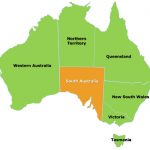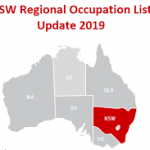Feb 25, 2019
Working Holiday Visa Changes: The availability of a third-year visa will attract working holiday makers to work for longer in regional Australia.
[social_share/]
Working Holiday Maker visa program
The Australian Government has announced changes to the Working Holiday Maker (WHM) visa program to support regional and rural communities.
Changes to the WHM visa program include:
From 5 November 2018, expanding the regional areas where subclass 462-visa holders can work in agriculture (plant and animal cultivation) to qualify for a second year of stay in Australia. Currently only those who work in Northern Australia are eligible.
From 5 November 2018, increasing the period in which subclass 417 and 462 visa holders can stay with the same agricultural (plant and animal cultivation) employer, from 6 to 12 months.
The option of a third-year for subclass 417 and 462 visa holders who, after 1 July 2019, undertake 6-months of specified work in a specified regional area during their second year.
Over the coming weeks, offering an increase in the annual caps to a number of countries that participate in the subclass 462 visa program.
Increase the eligible age for subclass 417 visa applicants from Canada and Ireland to 35.
How will these changes address regional workforce shortages
The key focus is on providing farmers with immediate access to workers in key parts of regional Australia. The changes aim to increase the number of Working Holiday Makers available for seasonal work needs.
Employers will be able to retain trained and experienced employees doing agricultural (plant and animal cultivation) work for up to 12-months, rather than the previous 6-months.
The availability of a third-year visa will attract working holiday makers to work for longer in regional Australia.
What does plant and animal cultivation include
Plant and animal cultivation includes most agricultural work, such as:
the harvesting and/or packing of fruit and vegetable crops
pruning and trimming vines and trees
general maintenance crop work
cultivating or propagating plants, fungi or their products or parts
immediate processing of plant products
maintaining animals for the purpose of selling them or their bodily produce
immediate processing of animal products including shearing, butchery, packing and tanning
manufacturing dairy produce from raw material.
What additional parts of regional Australia will be included in the expanded arrangements
From 5 November 2018, this will be extended to regional areas in New South Wales, Queensland, Victoria and Western Australia, and all of Northern Territory, South Australia, and Tasmania. Details of specific postcodes will be published on the Department’s website shortly.
Are any changes being made to the subclass 462 Northern Australia initiatives
No change is being made to the existing Northern Australia concessions:
subclass 417 & 462 visa holders can continue to work with one employer in northern Australia for up to 12 months in Aged & Disability Care; Agriculture; Construction; Mining; and Tourism & Hospitality
subclass 462 visa holders can continue to complete specified work in northern Australia in tourism and hospitality or agriculture, forestry and fishing industries, to become eligible for a second-year visa.
How long will subclass 462-visa holders need to work in the additional regional areas to get the second year
Participation in the second-year program is voluntary. Subclass 462-visa holders need to complete a total of three-months (88 calendar days) of specified work to be eligible to apply for their second-year visa. They may combine work completed in any existing specified industry and location with new industries and locations to meet the work requirement.
What types of work completed will count towards third-year eligibility
Specified work for the third-year visa are the same as the eligibility for specified work for the second-year visa.
For further information please feel free to contact our office and we are more than willing to assist you.
 Immigration SA is introducing some changes to its general skilled migration nomination policies.
Immigration SA is introducing some changes to its general skilled migration nomination policies.
 Trades Recognition Australia (TRA) has announced changes to the Trade Skills Assessment programs for TSS, OSAP and TRS. The following changes apply to all applications received from 1st March 2019.
Trades Recognition Australia (TRA) has announced changes to the Trade Skills Assessment programs for TSS, OSAP and TRS. The following changes apply to all applications received from 1st March 2019.
 Working Holiday Visa Changes: The availability of a third-year visa will attract working holiday makers to work for longer in regional Australia.
Working Holiday Visa Changes: The availability of a third-year visa will attract working holiday makers to work for longer in regional Australia.
 Working Holiday Visa Australia Basic Requirements and Benefits
Working Holiday Visa Australia Basic Requirements and Benefits
 Canada Permanent Residence
Canada Permanent Residence







